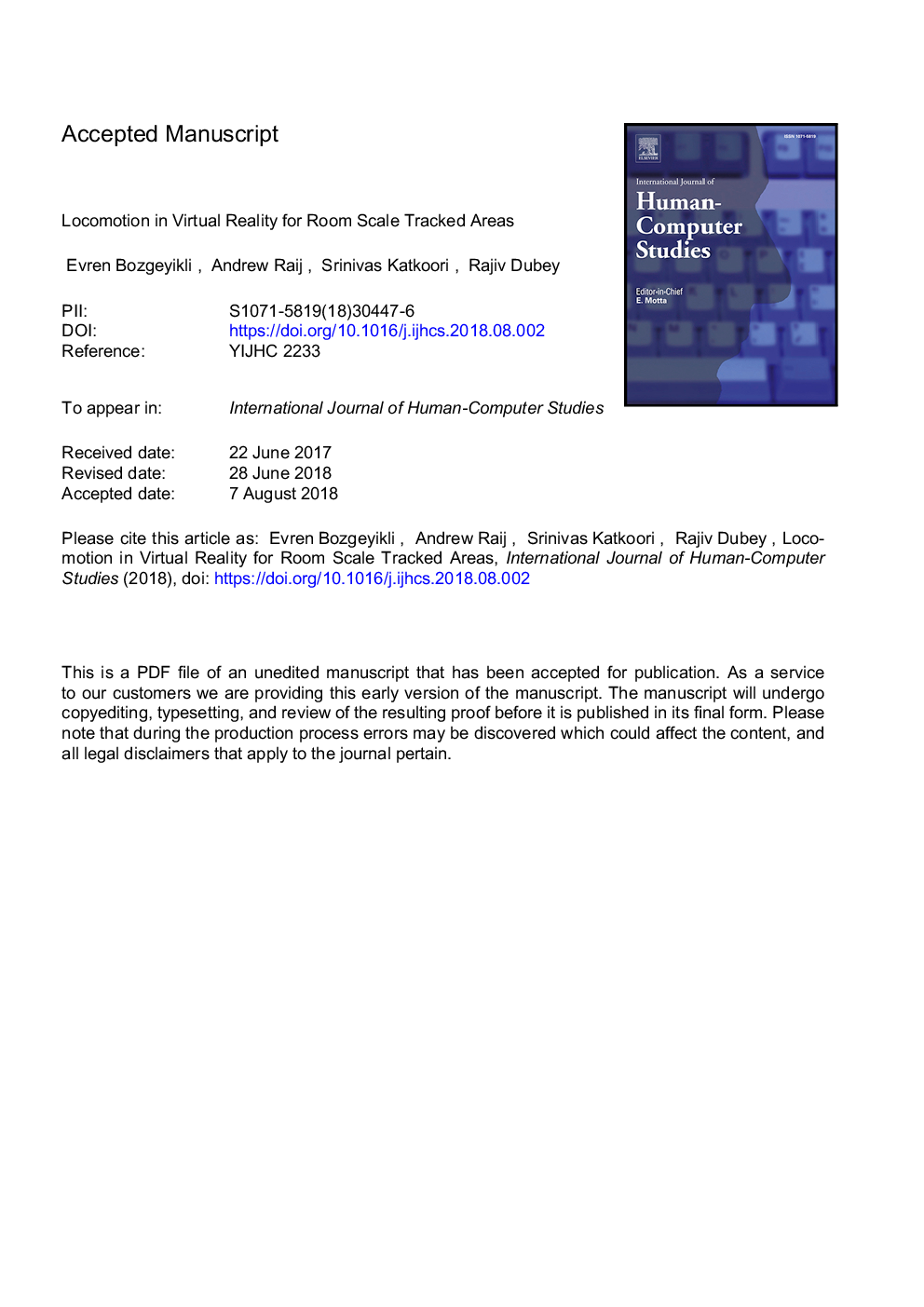| Article ID | Journal | Published Year | Pages | File Type |
|---|---|---|---|---|
| 8953558 | International Journal of Human-Computer Studies | 2019 | 30 Pages |
Abstract
Virtual reality (VR) is becoming a more popular and available technology, with the new generation systems and more content specifically developed for this medium. One of the crucial components of VR applications is locomotion, which is used for moving the viewpoint of user in virtual environments. Locomotion in VR is expected to have a direct effect on user experience in terms of effort, enjoyment, frustration, motion sickness and presence. To date, many locomotion techniques for VR have been studied. However, these techniques were primarily evaluated in large tracked areas (larger than 16â¯ft by 16â¯ft). On the contrary, emerging consumer VR systems typically track within smaller room scales. In this study, eight VR locomotion techniques were investigated in a room-scale tracked area (8â¯ft by 8â¯ft). These eight locomotion techniques are: redirected walking, walk-in-place, stepper machine, point & teleport, joystick, trackball, hand flapping and flying. A user study was performed with 15 participants. Results indicated that point & teleport, joystick and redirected walking were suitable VR locomotion techniques for room scale tracked areas whereas hand flapping and flying were not suitable.
Related Topics
Physical Sciences and Engineering
Computer Science
Artificial Intelligence
Authors
Evren Bozgeyikli, Andrew Raij, Srinivas Katkoori, Rajiv Dubey,
